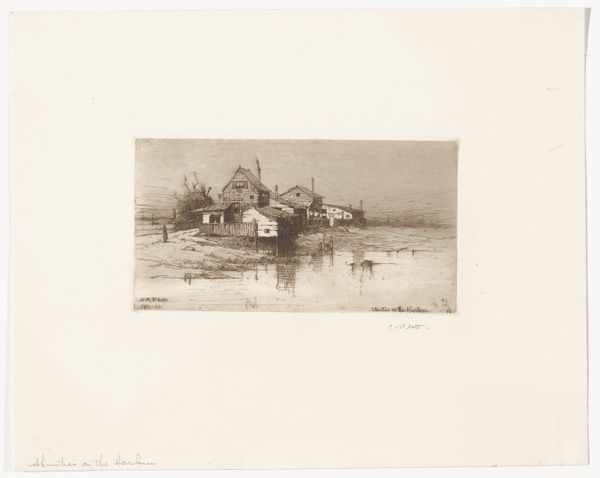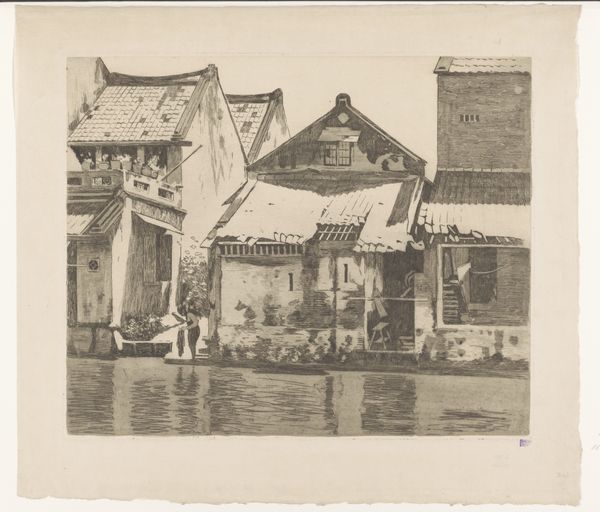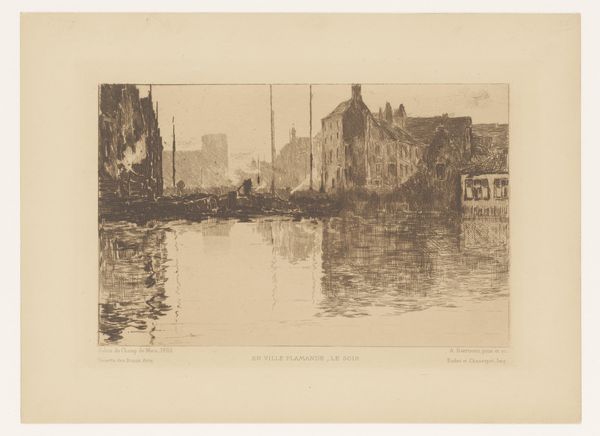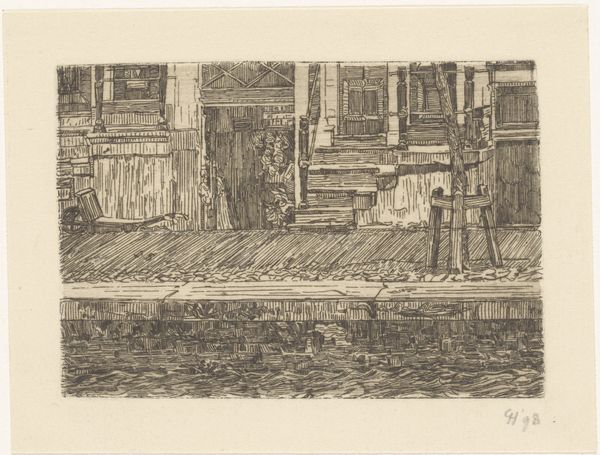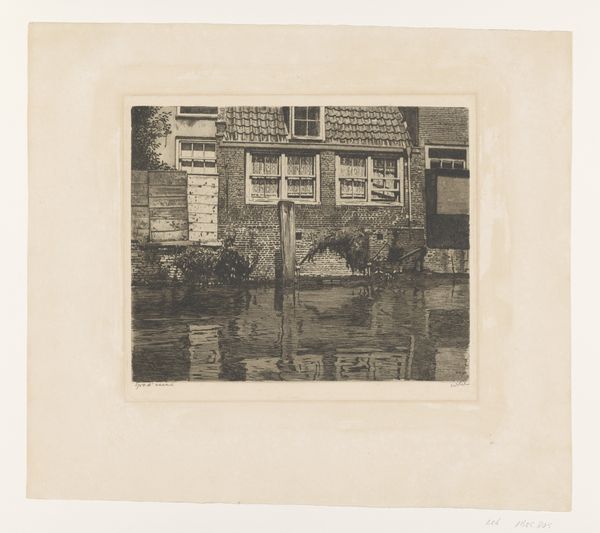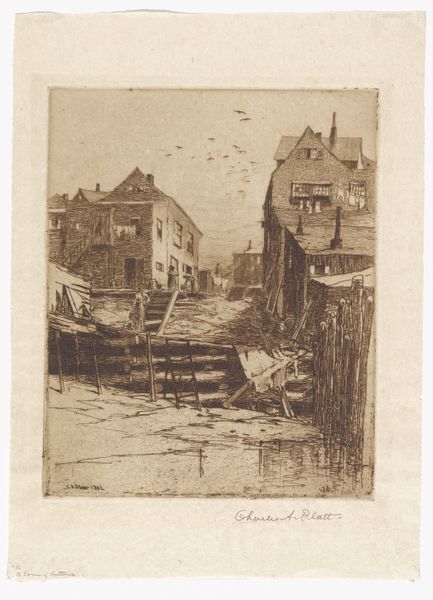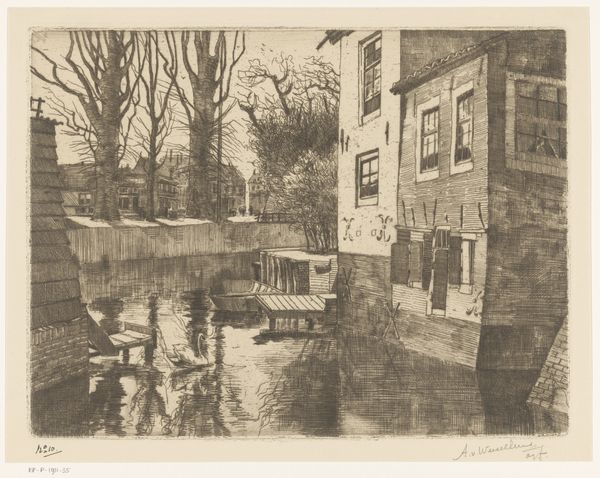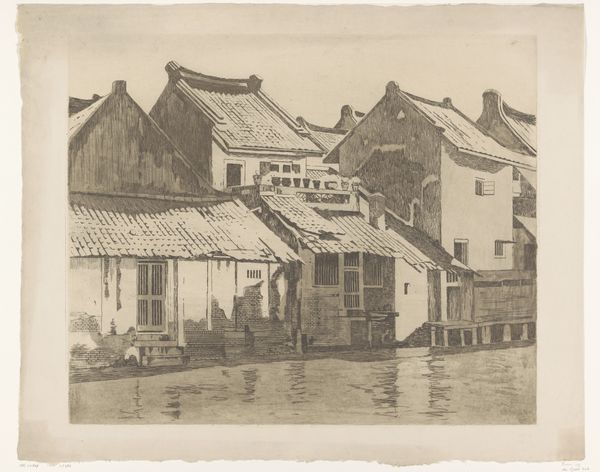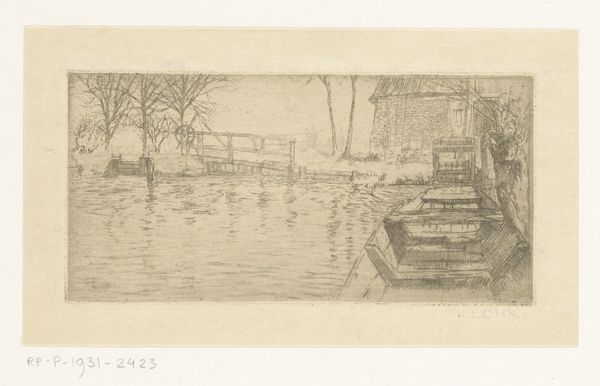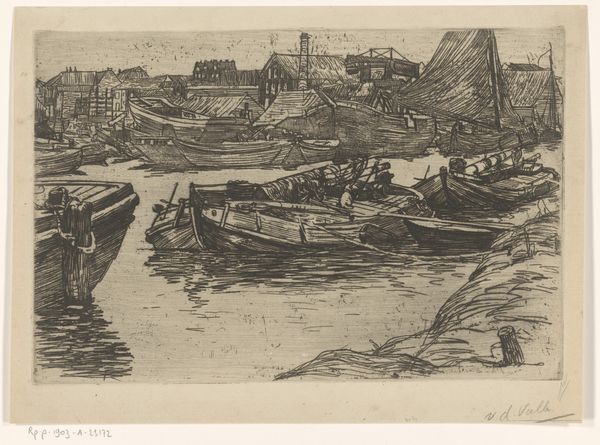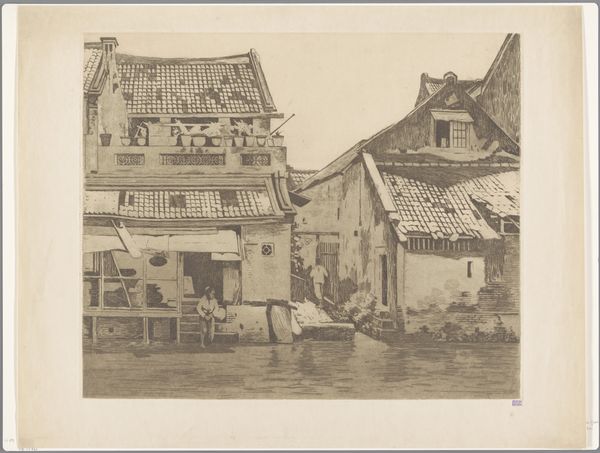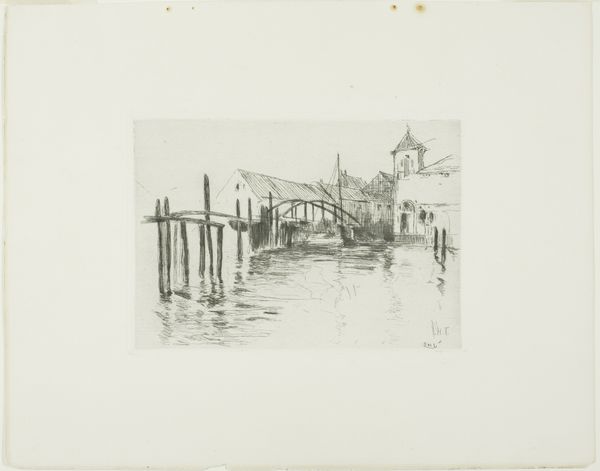
Achtergevels van de Voorstraat 239, 237, 235 en 233 in Dordrecht c. 1900
0:00
0:00
print, etching
#
dutch-golden-age
# print
#
etching
#
landscape
#
etching
#
cityscape
Dimensions: height 190 mm, width 238 mm
Copyright: Rijks Museum: Open Domain
Editor: This is Willem Witsen’s "Achtergevels van de Voorstraat 239, 237, 235 en 233 in Dordrecht," an etching from around 1900. It has a sombre, almost haunting quality, doesn't it? I’m curious, what strikes you about this particular print? Curator: Well, focusing on the materials and production, we can see how the etching process itself creates a distinct social narrative. This wasn’t just about rendering a scene. It’s about the labour involved, the access to materials, and the commodification of the image. Notice how the uniformity in tone is broken by what seems to be wear and tear? Editor: You mean the slight variations in the ink across the print? Curator: Precisely! These imperfections are a direct consequence of the printing process itself. Are they defects or… something else? They reveal the hand of the maker. Think of the social context: Who was making these prints, and for whom? Was this intended for mass consumption or a more niche audience? Editor: So, the texture almost becomes another layer of meaning, speaking to the means of production in this era? I see what you’re saying. It makes me wonder about Witsen’s relationship to the craft itself. Curator: Exactly. Witsen wasn't simply depicting buildings. He was engaging with the socio-economic reality of printmaking. Each print is a trace of labor, distribution, and perhaps even social status. The subtle tonal range would require skill in production. This may have even added to the overall artistic intention. Editor: That’s a perspective I hadn’t considered before. I was so focused on the cityscape as a subject. But now, thinking about the etching as a product, it reveals so much more about the period and the artist's own place in it. Curator: Indeed. Art isn’t separate from life, the making of art can tell us even more about an artist.
Comments
No comments
Be the first to comment and join the conversation on the ultimate creative platform.
